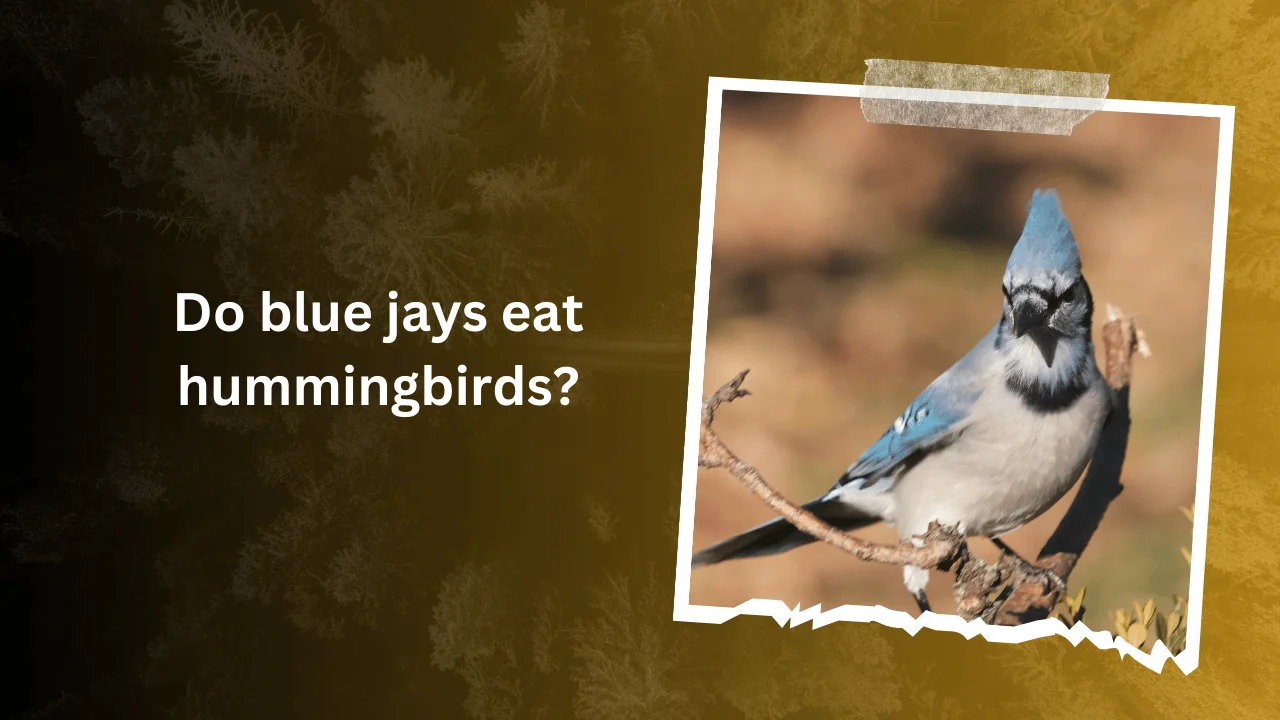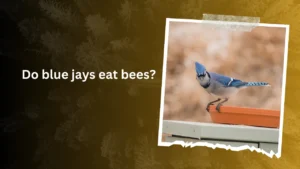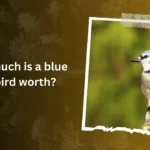The garden is a place of peace, a world where tiny hummingbirds flit around flowers like living jewels, and vibrant blue jays rule the trees with their bold calls and striking feathers.
But beneath the tranquil beauty of these backyard scenes lies a surprising question: do blue jays, with their impressive beaks and clever minds, eat hummingbirds? This thought can be unsettling for anyone who’s ever delighted in watching these delicate creatures sip nectar in the morning light. Yet, as with much of nature, things aren’t always as they seem.
Blue jays have a reputation for being clever and even aggressive predators within their habitat. They’re known to eat eggs and nestlings from other birds’ nests, and sometimes they’re even observed swooping in with predatory intent.
But what about hummingbirds? While it’s true that blue jays have been spotted attacking smaller birds, the interactions between these two species are much more nuanced and rare than one might expect.
This article dives into the fascinating world of bird behaviors, exploring whether the clash between blue jays and hummingbirds is a true survival drama or simply a myth.
So why does this matter? Understanding the intricate relationship between these species is a window into how ecosystems work, showing us how different animals find balance, even when one might have the upper hand.
For birdwatchers, nature enthusiasts, or anyone who’s wondered about the tiny struggles in their backyard, this is a story of curiosity and caution. Let’s peel back the layers of this unusual question to uncover the truth about the blue jay-hummingbird dynamic and what it reveals about the wild world around us.
Contents [hide]
- 1 Understanding Blue Jays and Hummingbirds
- 2 The Myth and Reality of Predation
- 3 Factors Influencing Interactions
- 4 Coexistence and Competition
- 5 Conservation Implications
- 6 Conclusion
- 7 FAQ’s
- 7.1 Do blue jays actually eat hummingbirds?
- 7.2 Why are blue jays sometimes seen as threats to hummingbirds?
- 7.3 How do hummingbirds avoid blue jay attacks?
- 7.4 Can I attract both blue jays and hummingbirds to my yard without conflict?
- 7.5 Are there benefits to having blue jays around for hummingbirds?
- 7.6 What’s the best way to set up a bird-friendly garden for both species?
Understanding Blue Jays and Hummingbirds
Blue jays and hummingbirds may share the same yards and gardens, but they’re worlds apart in behavior and lifestyle. Blue jays are known for their omnivorous diet; they eat everything from seeds and fruits to insects, small animals, and even the eggs or nestlings of other birds. This diet supports their territorial nature.
Bold, intelligent, and social, blue jays often form tight family groups that fiercely guard their territories, sometimes intimidating smaller birds away from feeders or nesting areas.
In contrast, hummingbirds have their own distinct adaptations and strategies for survival. Known for their rapid, hovering flight and remarkably fast metabolism, hummingbirds must consume large amounts of nectar and insects to fuel their tiny bodies.
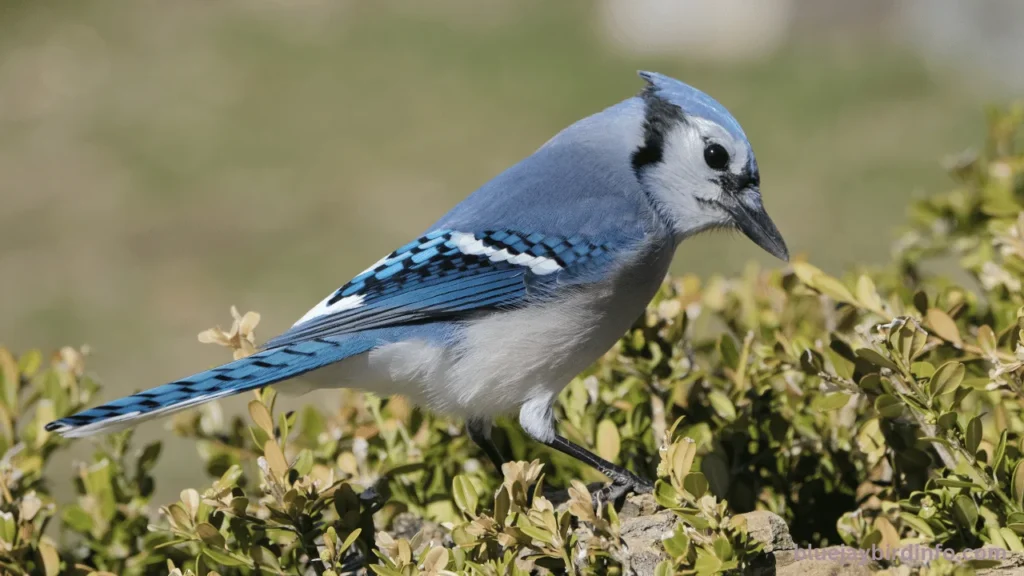
They feed constantly, visiting hundreds of flowers a day, and their vibrant colors and delicate forms belie their toughness. Though small, they are feisty defenders of their territory, chasing away much larger birds to protect their food sources and nests. Unlike blue jays, they typically nest in hidden, well-camouflaged spots, crafting tiny, intricate nests for their young.
Despite their differences, these two species often find themselves coexisting in overlapping habitats, particularly in wooded areas, gardens, and suburban spaces. Here, their paths cross frequently around bird feeders and flowering plants.
Yet, while they may share the same environment, the interactions between blue jays and hummingbirds are rarely direct; hummingbirds keep to themselves, flitting around flowers, while blue jays claim the trees and feeders.
This overlap in territory creates a fascinating dynamic where these contrasting species sometimes become unexpected neighbors, balancing between competition and coexistence.
The Myth and Reality of Predation
The notion of blue jays as hummingbird predators has evolved over generations, largely shaped by the blue jay’s bold and sometimes intimidating reputation.
Historically, blue jays have been seen as aggressive and opportunistic feeders, known for raiding nests and feeding on smaller birds’ eggs or young, which naturally led to a perception of them as predators to anything smaller or weaker.
This reputation created a myth that blue jays were direct threats to hummingbirds, contributing to a sense of caution—or even dislike—around them in the birdwatching community.
In truth, documented cases of direct predation where blue jays have attacked or consumed adult hummingbirds are extremely rare. Blue jays are much more likely to target easier prey, such as eggs or fledglings from nests that are more accessible than those of hummingbirds.
Due to hummingbirds’ remarkable agility and speed, they’re not typically easy targets, even for a bird as clever and persistent as a blue jay. While there are some anecdotal reports of blue jays attempting to catch a hummingbird, these instances remain unusual and isolated.
However, blue jays can still pose indirect threats to hummingbirds, primarily through nest raiding or competing for similar food sources. Blue jays sometimes destroy hummingbird nests if they come across them, whether out of curiosity, territoriality, or a search for food.
They also may dominate backyard feeders, making it harder for hummingbirds to access crucial food, especially during high-energy times like breeding or migration. Thus, while blue jays may not actively hunt hummingbirds, their behaviors can inadvertently create challenges for these tiny, delicate neighbors in shared spaces.
Factors Influencing Interactions
The relationship between blue jays and hummingbirds can shift significantly depending on factors like seasonal changes in food and nesting resources. During spring and summer, when flowers are blooming and insects are plentiful, both species have ample food sources, reducing the potential for competition.
Blue jays are more focused on their nesting needs, while hummingbirds dart from flower to flower, largely avoiding conflict. However, in late summer and early fall, when resources begin to dwindle, blue jays might be drawn to feeders or areas where they overlap with hummingbirds, intensifying competition for food and space.
Regional differences also impact how blue jays and hummingbirds interact. In areas where both species are abundant, like parts of the eastern United States, encounters may be more common, with blue jays sometimes defending feeders aggressively.
Conversely, in regions where one or both species are less common, their interactions might be rarer and less competitive. The abundance of certain flowering plants, insects, and nesting materials in different climates also influences how frequently they cross paths, affecting their dynamic as backyard neighbors.
Human activities can further alter these interactions, with factors like bird feeders, habitat changes, and suburban development playing key roles. Feeders, for instance, often attract both blue jays and hummingbirds, especially during food-scarce seasons, increasing competition.
Additionally, habitat destruction forces birds into closer proximity, sometimes sparking unintended rivalry over limited resources. On the positive side, thoughtful placement of feeders and planting pollinator-friendly gardens can help create a balanced environment that meets the needs of both species, reducing direct conflicts and encouraging a healthier backyard ecosystem.
Coexistence and Competition
In the delicate balance of coexistence and competition, hummingbirds have likely evolved several behavioral adaptations to avoid potential threats from larger birds like blue jays.
Known for their agility and speed, hummingbirds can quickly dart away from perceived dangers, allowing them to navigate shared spaces without falling prey to larger, slower birds.
Additionally, hummingbirds often position their nests high up in dense foliage or tucked within thorny shrubs, making it challenging for most predators, including blue jays, to reach their young. These strategies help hummingbirds minimize direct encounters with potential threats, ensuring a level of safety despite living alongside larger, territorial birds.
However, blue jays and hummingbirds frequently compete for shared resources like nectar and insects, especially around backyard feeders. While blue jays don’t feed on nectar, their presence can dominate feeders or scare smaller birds, disrupting hummingbirds’ access to these energy sources.
Blue jays also consume insects, a key part of the hummingbird’s protein intake, especially during breeding season. This competition can create a tense balance in spaces where food sources overlap, with hummingbirds often employing their speed to slip in and out quickly when larger birds aren’t nearby.
Interestingly, blue jays can also provide indirect benefits to hummingbirds, particularly by deterring more aggressive predators. Their loud calls and frequent patrolling help keep the area clear of other animals, such as crows, hawks, or snakes, that could pose a far greater threat to a hummingbird’s nest or territory.
In this way, blue jays can unintentionally act as protectors of the shared habitat, creating a complex relationship where both competition and coexistence play essential roles in the lives of these two fascinating species.
Conservation Implications
Protecting both blue jays and hummingbirds is essential for maintaining balanced, thriving ecosystems, as each plays a unique role within its habitat. Blue jays, with their ability to disperse seeds, contribute to forest regeneration and plant diversity, while hummingbirds are crucial pollinators for a wide variety of flowering plants.
Conserving the natural environments where both species thrive allows these benefits to continue, supporting a healthier biodiversity that benefits not only birds but countless other organisms within their ecosystems.
Reducing human-wildlife conflict is another critical aspect of conservation. Human activities, such as feeder placement and landscaping choices, can inadvertently create competition or aggression between species in shared spaces.
Strategies like setting up multiple feeding stations at various heights and locations can help both species access resources without clashing. Planting native, flowering plants that attract hummingbirds while providing food sources for blue jays can also reduce feeder competition and foster a more harmonious environment.
Creating a balanced backyard ecosystem encourages positive interactions while minimizing the potential for conflict.
To deepen our understanding, further research on the interactions between blue jays and hummingbirds would be valuable. Observing how these species adapt to changing environments and competition in shared spaces can reveal important insights into their behavioral ecology.
Studies could focus on factors like habitat overlap, competition intensity, and the impact of human influence, helping to guide conservationists in designing strategies that protect both species and their habitats.
Understanding these dynamics more fully can help us make informed decisions that support biodiversity and the peaceful coexistence of these fascinating birds.
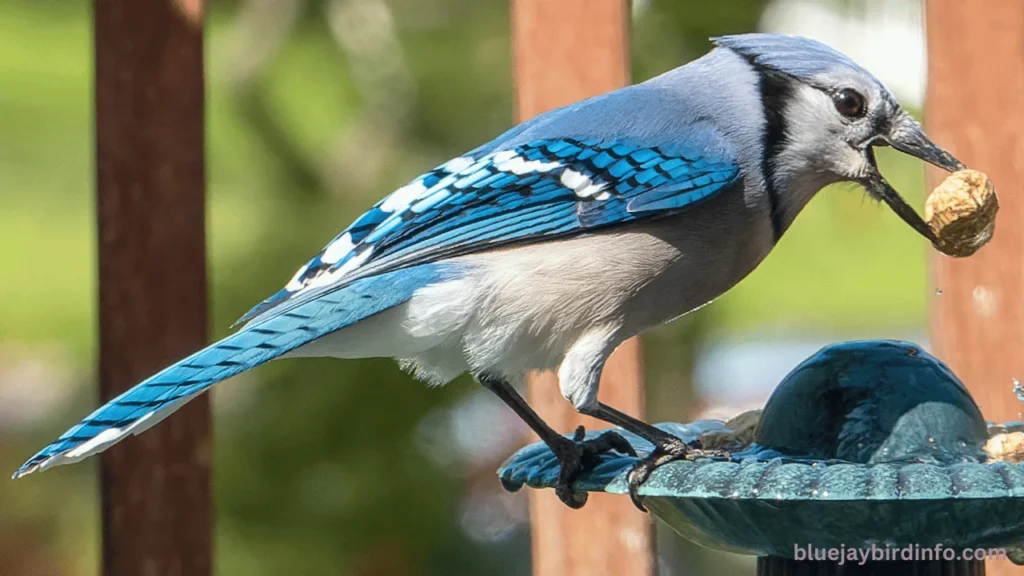
Conclusion
In exploring the relationship between blue jays and hummingbirds, we’ve uncovered a complex interplay of coexistence, competition, and adaptation. Blue jays, with their omnivorous diet and territorial nature, may occasionally pose an indirect threat to hummingbirds, primarily through nest raiding or competition for resources.
However, direct predation is rare, as hummingbirds have evolved impressive adaptations that help them avoid such threats. Human activities, like setting up bird feeders and cultivating gardens, can both support these birds and inadvertently heighten competition, highlighting the importance of thoughtful, balanced conservation efforts.
Together, these insights paint a picture of a dynamic, sometimes challenging, yet fascinating coexistence in our backyards.
Ultimately, the relationship between these two species is a reminder of the intricacies of nature and how diverse species can find ways to live alongside each other, even in shared spaces. By fostering environments that respect and support both blue jays and hummingbirds, we contribute to a thriving ecosystem where biodiversity flourishes.
This balance not only benefits the birds themselves but also enhances our connection to the natural world, offering us a deeper appreciation for the subtle, everyday dramas unfolding right outside our windows.
FAQ’s
Do blue jays actually eat hummingbirds?
Direct predation of adult hummingbirds by blue jays is rare. While blue jays may occasionally raid nests, hummingbirds’ agility makes them challenging targets.
Why are blue jays sometimes seen as threats to hummingbirds?
Blue jays have a reputation as aggressive foragers and nest predators. Their presence can indirectly threaten hummingbirds by competing for food sources and sometimes raiding nests.
How do hummingbirds avoid blue jay attacks?
Hummingbirds are incredibly agile and often place their nests in hidden or hard-to-reach areas, which helps them evade larger predators like blue jays.
Can I attract both blue jays and hummingbirds to my yard without conflict?
Yes! Placing multiple feeders at different heights and using native plants can help attract both species while reducing competition for resources.
Are there benefits to having blue jays around for hummingbirds?
Interestingly, blue jays can help deter more aggressive predators, like hawks or crows, indirectly benefiting smaller birds, including hummingbirds.
What’s the best way to set up a bird-friendly garden for both species?
Include a mix of flowering plants that attract hummingbirds and shrubs that provide food and shelter for blue jays. Space feeders apart to encourage coexistence.

